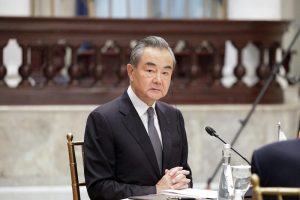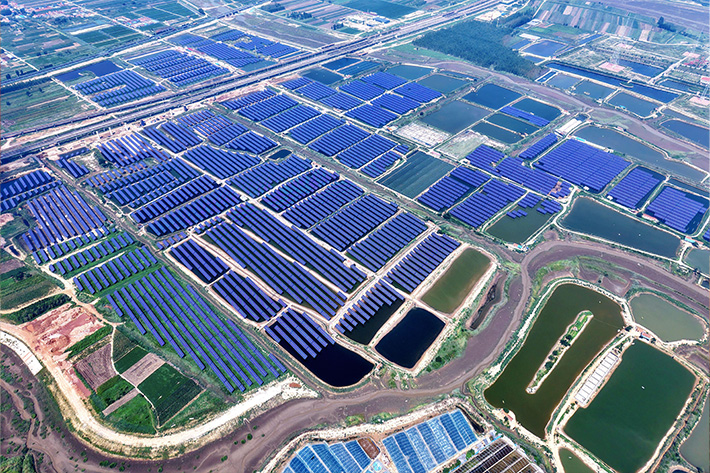(ATF) Analysts say SMIC’s official inclusion on a US export control blacklist may be a potential positive because it is likely to force China’s largest chip foundry to focus on mature technologies that are more profitable.
Several analysts have maintained a “buy” rating for SMIC’s A-shares and Jefferies has upgraded the company’s H-share to a “buy” rating.
Bosses of Semiconductor Manufacturing International Corp (SMIC), which is China’s largest chip foundry, said on Sunday that its addition to the US export control blacklist has had little impact on its short-term operations but would “have a material adverse effect on the research and development (R&D) and capacity construction of 10 nanometer (nm) and below advanced technology nodes.”
US companies will be required to apply for an export licence if they want to supply certain items or technologies to SMIC, the company said in a filing with the Hong Kong exchange on Sunday.
The US Department of Commerce adopts a “presumption of denial” review policy for products or technologies used at 10nm and below, including extreme ultraviolet lithography. The company may also be restricted from providing foundry services to certain customers, it said.
The latest US decision looks more like a highly targeted ban than a blanket ban on SMIC and would mean that “export of US technologies for mature nodes of above 10nm is possible”, several analysts from Jefferies said in a commentary. And it would be easier for SMIC to find non-US equipment suppliers for mature nodes, they said.
Taiwanese chip expert appointed
In addition, SMIC’s recent appointment of Chiang Shang-Yi as its executive director and vice-chairman also suggests its leaning towards mature nodes, Jefferies said. Given that Chiang had led TSMC’s R&D in mature nodes and advocated using advanced packaging to improve performance, Chiang’s leadership will likely bring a more realistic focus to SMIC, they said.
SMIC’s co-chief executive Liang Mong-Song resigned last week as the company announced Chiang’s appointment. Liang was a key driver of SMIC’s attempts to move into more advanced manufacturing nodes to catch up to the competition, rather than to double down on older but more profitable technology.
The chipmaker does not currently mass-produce chips that use 10 nm-and-below technologies. Liang’s resignation letter cited by Taiwanese media revealed that the company had finished developing the 7nm process and planned trial mass-production in April 2021, plus development of 5nm and 3nm production in the future.
According to its third-quarter report, 14 nm and 28 nm processes accounted or 14.6% of its revenues while the remainder was contributed by mature technologies above 28nm.
Earlier this month, SMIC announced a joint venture plan in Beijing with $7.6 billion of first-phase investment to focus on 28nm-and-above chip production. Jefferies and several other firms see this JV plan as another signal for SMIC’s potential focus on mature nodes.
Jefferies said the tight supply and demand dynamics in mature nodes and much lower R&D and capital expenditure costs would improve SMIC’s return on invested capital, so it upgraded the firm’s H-shares to “buy” with a target price of HKD$23 (US$2.97), and maintained a “buy” on its A-shares with a target price of 72 yuan ($10.99).
Analysts from Minsheng Securities and Founder Securities shared similar views to Jefferies. Both maintained a “buy” rating for SMIC’s A-share.
“American companies such as Lam Research and Applied Materials dominate the high-end semiconductor equipment market. It would be difficult to find their replacement in the short term, hence SMIC’s advanced chip development of 10nm-and-below will be affected,” Wang Fang, an analyst from Minsheng Securities, said.
She expects SMIC to shift its focus to mature technologies that are above 28 nm, which is a big enough market with the increasing chip demand driven by the growth of electric vehicles, renewable energy power generation, video surveillance and consumer electronics industries.
Above-28 nm chip processes are expected to account for 48% of global chip sales in 2025, or a market of over $41 billion, according to IHS Markit.
“A fully-functioning wafer factory needs to purchase a variety of front-end core process equipment such as photolithography machines, etchers, coating machines, ion implantation machines, cleaning machines, oxidation equipment and measurement equipment. Except for photolithography machines which can be purchased from the Netherlands, the other types of equipment have all been dominated by American suppliers and their supplies may be affected,” Chen Hang, an analyst from Founder Securities, said.
Chen expects SMIC to switch to domestic suppliers for core equipment for the more mature technologies – 90 nm, 65 nm, and 55 nm – and source some other equipment from Japanese, European and South Korean companies.
Breaking dependence on US suppliers a national priority
SMIC leads China’s campaign to establish a self-sufficient semiconductor ecosystem, one not dependent on US companies. The administration of President Xi Jinping has prioritized such efforts.
The Trump administration, meanwhile, appears intent on thwarting China’s moves to acquire such capabilities, before it leaves office, and SMIC has repeatedly been in its crosshairs.
The latest US move expands the restrictions imposed on SMIC in September when the US Department of Commerce’s Bureau of Industry and Security issued letters informing certain American companies they must henceforth obtain a licence before continuing to supply goods and services to SMIC.
Another blow landed early in December, when the Defence Department designated SMIC as owned or controlled by the Chinese military and the designation would prohibit US investors from buying SMIC securities.
SMIC has strenuously denied the existence of any ties with Chinese military, and insists it’s an independent private company.
The United States added dozens of Chinese companies, including SMIC and Chinese drone manufacturer SZ DJI Technology Co, to a trade blacklist on Friday. And there were 77 companies, including 60 Chinese companies, on the so-called Entity List released by the US Department of Commerce.























